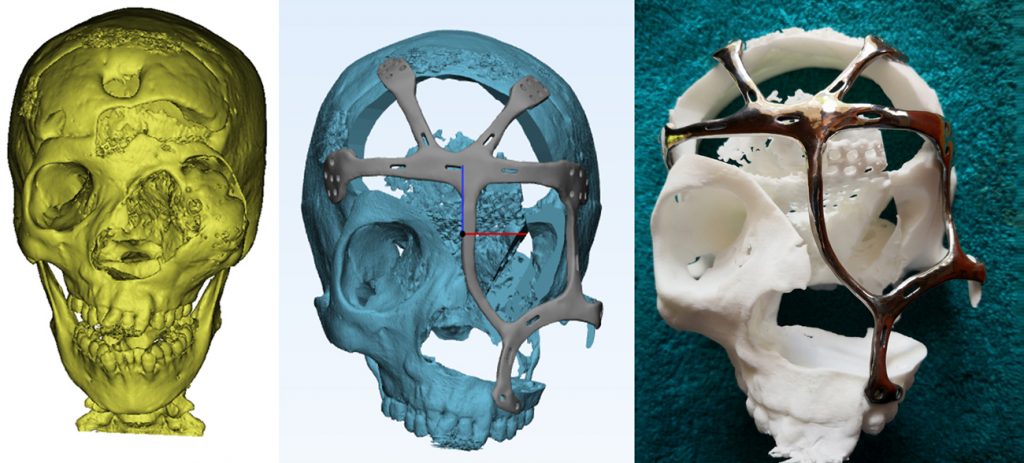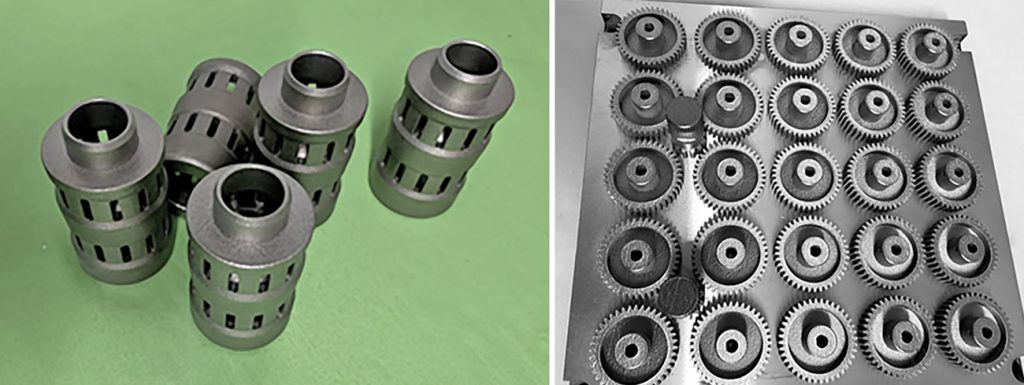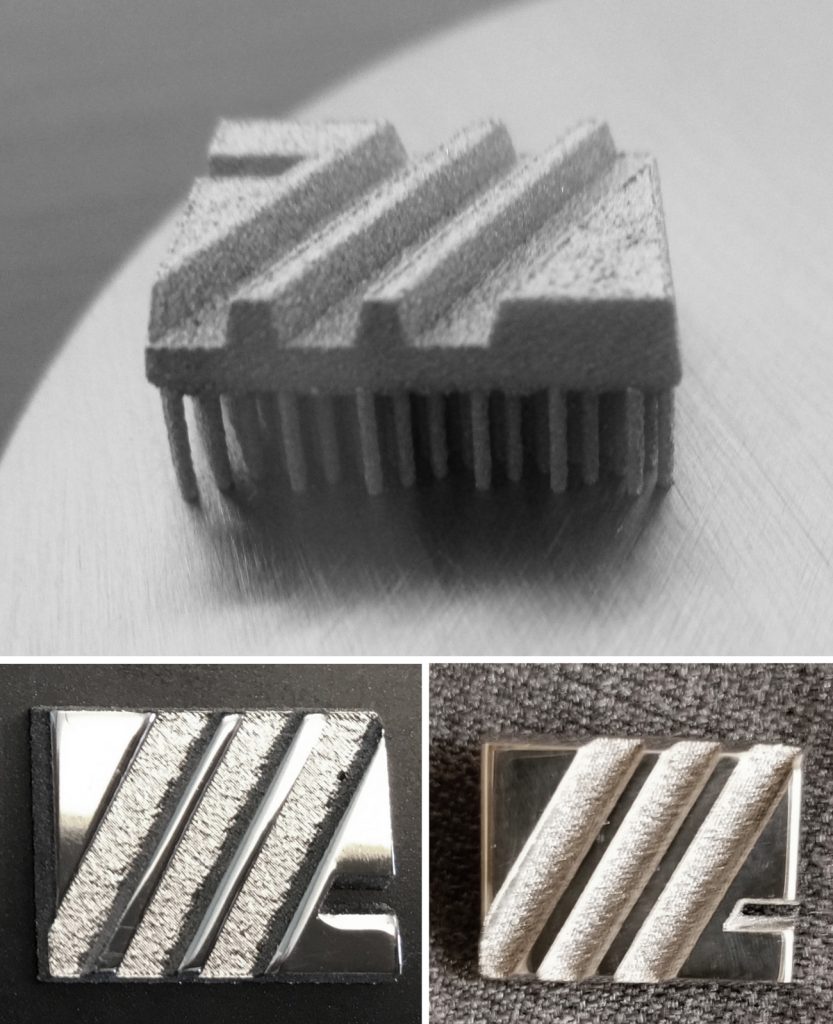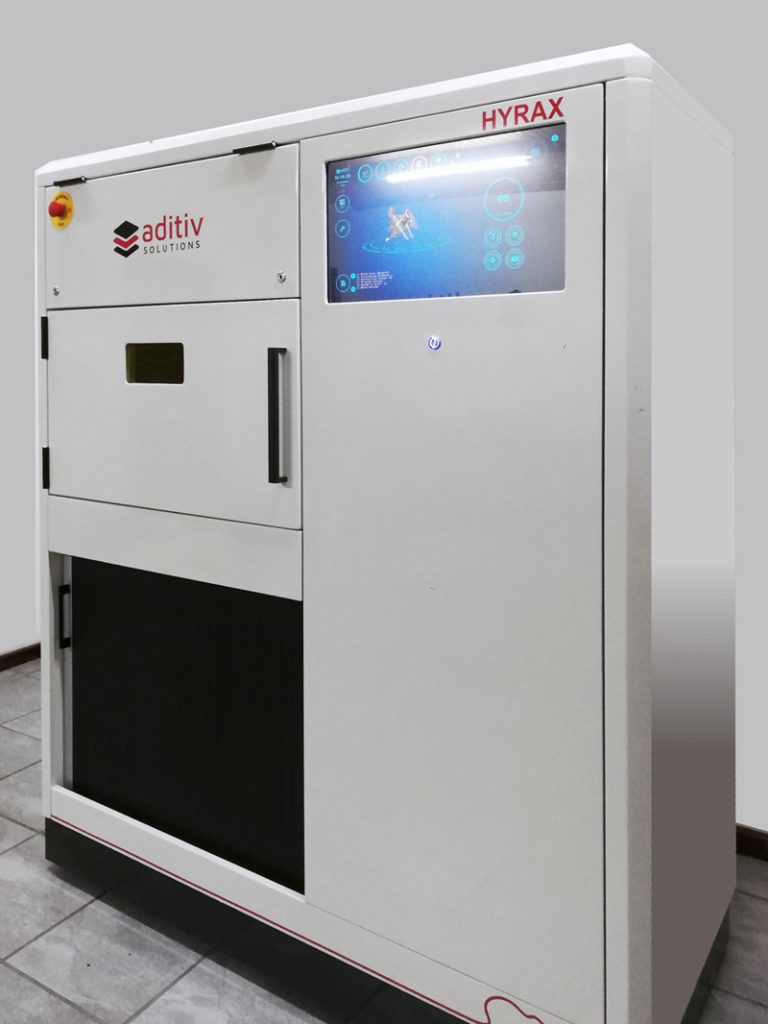Metal AM in South Africa: Research and commercial initiatives bring the benefit of AM to the African continent
The Additive Manufacturing industry in South Africa has come a long way since the installation of the country’s first AM machine in 1991, with a number of research and commercial initiatives driving the development of world-class applications and knowledge. In this article, Terry Wohlers and Olaf Diegel, Wohlers Associates, present an overview of metal Additive Manufacturing activities in South Africa, from the technology’s life-changing use for medical implants to its development for rapid, large-scale part production and beyond. [First published in Metal AM Vol. 6 No. 4, Winter 2020 | 15 minute read | View on Issuu | Download PDF]

The first AM machine installation in South Africa was in 1991. Until 1994, a total of three machines operated in the country. During this time, the Council for Scientific and Industrial Research (CSIR) and a few universities worked to create interest in AM, with support from technology transfer programmes and industry workshops.
In many countries, AM membership groups and associations were forming. Back then, most referred to the technology and industry as ‘rapid prototyping’, because this was by far the most popular application. The founding meeting of the Global Alliance of Rapid Prototyping Associations (GARPA) took place at the SME RAPID event in Dearborn, Michigan, USA in 1998. South Africa was invited under the auspices of the Time Compression Technologies Centre (TCTC), and received an invitation to become a member of GARPA.
The Rapid Product Development Association of South Africa (RAPDASA) held its first meeting at the University of Stellenbosch in 1999, resulting in the first international RAPDASA conference in November 2000 at the CSIR, in Pretoria. This expanded awareness and validity of AM in South Africa’s manufacturing space. By 2018, an estimated 5,700 AM machines were operational in the country.
South African companies are now pushing the boundaries of metal AM, resulting in world-class results. Three areas have emerged as strengths in the country: they include the design and production of medical devices, aerospace parts, and foundry applications. In support of these areas, South Africa has an estimated eighty AM service providers, with an estimated twelve metal AM machines installed.
AM adoption for medical applications
The Centre for Rapid Prototyping and Manufacturing (CRPM) at Bloemfontein’s Central University of Technology (CUT), founded in 1997, is arguably the most developed and advanced AM facility in South Africa. It has produced thousands of medical implants and industrial parts over the past two decades, and received ISO 13485 certification in 2016, meaning its quality management meets the safety and efficacy requirements of medical devices. This certification applies to the design, development, and production of patient-specific titanium implants, preoperative models, jigs and nylon cutting guides by AM, and the production of these products on a contract basis.
With support from Materialise, Technimark, Stellenbosh University, and CSIR, CRPM produced a custom titanium implant for a thirty-two-year-old patient with ossifying fibroma: a slow-growing tumour that caused the expansion of her lower jaw. Using advanced methods developed over many years, the team resected the tumour and restored the function and appearance of the patient’s mouth and jaw, as shown in Fig. 1.
Another project involved a complex titanium facial implant made by AM, shown in Fig. 2. The work was supported by CRPM’s clinical advisor Cules van den Heever, as well as the Carl and Emily Fuchs Foundation, under the programme ‘Changing Faces, Changing Lives’. The project won an award for being the best managed under the foundation, and an award recognising it as the project with the most impact.

Aerospace parts
Aerosud is an established supplier of aerostructure and aircraft interior parts that has been pushing the boundaries of titanium aircraft part design and manufacturing for many years. Using aspects of Design for Additive Manufacturing (DfAM) such as topology optimisation, Aerosud’s engineers created the two rudder brackets shown in Fig. 3, explained Jean-Pierre Serfontein, Senior Research and Development Engineer at the company.

The parts shown are the hinge brackets attached to the rudder for a vertical stabiliser. The lower hinge bracket was consolidated from three parts that are normally machined from AA7050 aluminium alloy and assembled. Both additively manufactured brackets, produced in Ti6Al4V titanium alloy, went through an optimisation study to minimise weight while maintaining or increasing stiffness. Following successful Additive Manufacturing, they were assembled into the rudder and survived structural testing.
Toolmaking
Toolmaking in South Africa has made a considerable industrial impact by applying the advantages of Additive Manufacturing. Berry Astrapak, near Durban, is the first South African tool and die maker that offers metal AM in house. The company uses AM to produce plastic injection mould inserts, such as those shown in Fig. 4.

Metal Heart is a service provider with experience in producing metal AM parts for series production applications, including the manufacture of steel valves for motorcycle engines, which are produced by Laser Beam Powder Bed Fusion (PBF-LB). The company has also done extensive work on die-casting tools with conformal cooling channels. The company has used W720 (1.2709) maraging steel to additively manufacture inserts and sprue bushes with conformal cooling channels. The work has reduced cycle time for aluminium castings from 1 min 38 sec to 48 sec, nearly doubling output without compromising tool life.
From a performance point of view, Metal Heart has achieved an average insert lifespan of about 115,000 cycles by adopting metal Additive Manufacturing for its inserts. By comparison, the best performing conventionally-made insert, machined in W302 steel, lasted 60,000 cycles. The surface hardness of W720 steel maintains dimensional accuracy through the life of the tool, and the material does not temper, so the core of the inserts remains structurally sound.

Valve parts and spares
Akhani 3D, an advanced service provider, supplies specialised valves for water reticulation (Fig. 6). In recent months, due to the coronavirus (COVID-19) pandemic, the supply chain was compromised, forcing the company to find a new source for several critical parts needed to sustain its business. Investment casting and CNC machining had been used previously, but wax moulds for the complex parts in a range of sizes are expensive and would require an investment of about R150,000 ($40,000) per mould. A cost study was performed on the range of sizes of the complex parts, and the design was optimised on the smaller parts in the range. The cost of parts built on an M 290 metal AM machine from EOS GmbH, Krailling, Germany, was competitive for the two smaller parts in the range, enabling the production of small batches on demand without the need for tooling. What is more, delivery time for the parts using AM is about four days, compared to four weeks using the conventional process.

Akhani 3D has also seen increased demand for spare parts to support local manufacturing operations in a range of industrial sectors. These are typically small, complex parts that are difficult and expensive to source from overseas suppliers. The transition of these parts to AM requires re-engineering, often with functional improvements and DfAM-based optimisation.
Additive Manufacturing of platinum
South Africa produces about 80% of the world’s platinum. However, most of the metal is not converted into products of increased value which could boost the economy. An initiative to change this was led by Northwest University (NWU) and Lonmin PLC, which is now a part of Sibanye-Stillwater, in collaboration with CUT and Vaal University of Technology (VUT).

In 2017, CUT took the lead in a systematic R&D programme aimed at determining process parameters for the Additive Manufacturing of pure platinum. A reduction unit, used to reduce a build volume, was purchased for one of the EOS M 280 machines installed at CUT’s CRPM, making it possible for the research team to use small amounts of the expensive platinum powder when experimenting. Pure platinum powder suitable for AM was produced by Lonmin to specifications provided by CRPM.
The collaboration between CUT, NWU, VUT and Lonmin led to the launch of Platforum (Pty) Ltd., a consortium that aims to develop platinum as a viable AM production material. Successful development of AM build parameters for pure platinum by the CRPM has resulted in the production of additively manufactured platinum jewellery as benchmark parts.

South African metal AM machines
ADC Aeroswift is a Pretoria-based company focused on metal Additive Manufacturing for high-end applications. Its Aeroswift machine, developed in collaboration with CSIR between 2011 and 2017, is one of the world’s largest and fastest PBF-LB machines (Fig. 9). It can additively manufacture titanium parts in a build volume of 2 m long, 600 mm high x 600 mm wide.

Aditiv Solutions is a South African company focused on affordable metal Additive Manufacturing solutions which employs a team of experts with experience in developing high-end metal AM machines. Aditiv is developing a PBF-LB system called the HYRAX (Fig. 10). The aim of the company is to service the aerospace and medical industries, as well as the needs of the general engineering community. Its initial focus is on low-cost metals, such as stainless and tool steels, that are commonly used for industrial applications.

Education and training in Additive Manufacturing
As awareness of metal AM grows, so too does the importance of fostering a new generation of engineers trained in parts design and manufacture using the technology. Removing support material and finishing parts, for example, are key elements to adoption success. Several AM education and training initiatives have been launched and continue to expand in South Africa.
In 2018, Wohlers Associates conducted a DfAM course targeted at South African organisations, in collaboration with CUT in Bloemfontein. The three-day course focused on the design methods, tools, and strategies that enable users to get the most value out of AM. Twenty-five people from ten organisations attended, including two people from Botswana (Fig. 11).

Another training and education initiative in South Africa is the Idea 2 Product (I2P) project, launched in 2011 as the brainchild of Deon de Beer, Chair of Innovation and Commercialization of Additive Manufacturing at CUT. An estimated fifteen I2P labs are in operation in South Africa, with ten in other countries. Each lab includes CAD workstations and AM machines for hands-on learning, experimentation, invention, and new product development. The primary goal of I2P is to offer opportunities for professionals and foster economic development, especially in underdeveloped regions of South Africa and other parts of the continent.
Summary
Wohlers Associates has had the good fortune of watching AM develop in South Africa for more than two decades. The company has visited the country twenty-two times during this period, but sadly missed a trip in 2020 due to the ongoing COVID-19 pandemic. Regular communication continues with many South African friends and business acquaintances.
The RAPDASA organisation, with its annual conference and exhibition, has played an important role in creating awareness of AM in the country, and has done an excellent job of promoting AM research, development, and adoption for more than twenty years. It is great to see so many people, both manufacturing veterans and newcomers, engage in the many AM opportunities that this fine country presents.
The investment in AM by South Africa has, and will continue to, pay off in several ways. One future possibility is the expansion of the technology into other parts of Africa. Pioneers such as Professor de Beer and CUT’s CRPM team have already taken steps in this direction, and it is our belief that RAPDASA could also play an increasingly important role in spreading the benefits of AM across the African continent. It is our hope that AM favourably impacts a growing number of organisations – and many local economies – in this part of the world.
Authors
Olaf Diegel and Terry Wohlers
Wohlers Associates, Inc.
Fort Collins
Colorado 80525
USA
www.wohlersassociates.com







